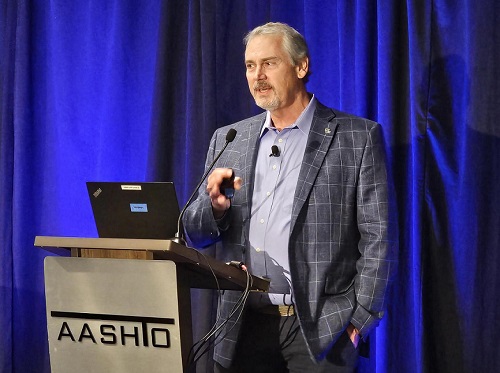David Harkey (above) – president of the Insurance Institute for Highway Safety or IIHS – shared his perspective on how state departments of transportation and other key industry stakeholders can work to make road travel safer for the long term during a luncheon keynote speech at the 2024 AASHTO Safety Summit
[Above photo by AASHTO]
This second annual summit – hosted by the American Association of State Highway and Transportation Officials this week in Houston – featured federal modal officials, state DOT leaders and managers, as well as private sector firms from across the country and focused on a variety of ways to improve roadway safety; everything from infrastructure changes to speed management and post-crash care.
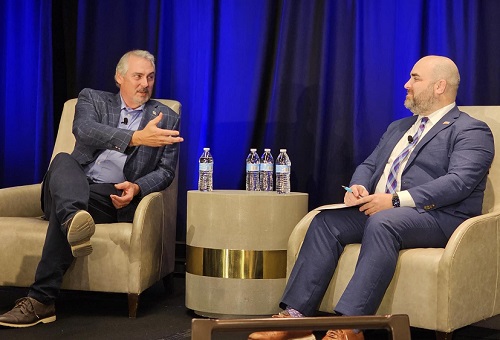
“It is really important that we start to think about how to get to the point of sustainable road safety in our country,” Harkey said. “Motor vehicle fatality rates have declined significantly in the U.S. during the past 50 years. But since 2014, fatalities have been up 30 percent. And those trends grew worse during the [COVID-19] pandemic.”
He noted that “those hit hardest” by the spike in motor vehicle-related fatalities during that 10-year uptick are pedestrians, bicyclist, and motorcyclists. “Overall, when we compare the U.S. to others around the globe, we are not doing very well,” Harkey noted. “Our [traffic] fatality rate 2.8 times higher than the next 28 high income countries.”
He said the safe systems approach being implemented by the U.S. Department of Transportation and many state DOTs will play a key role in reversing U.S. traffic fatality trends.
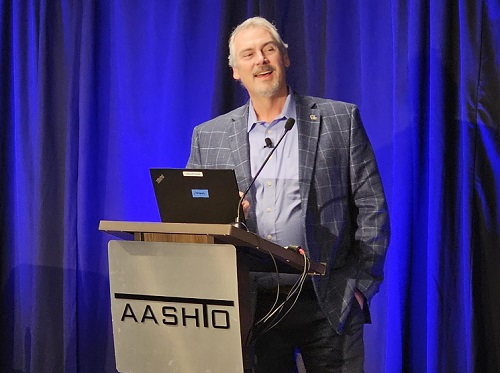
“This approach is how many countries have driven fatality numbers down over the past few decades,” Harkey pointed out. “And redundancy is a key principle – where you combine safe roads, safe vehicles, safe speeds, and safe people. And this is where partnerships start to make a difference. And unlikely partnerships at that.”
To that end, he pointed to the “30 by 30” global road safety campaign launched by the United Nations in July 2024; an effort to cut road fatalities by 30 percent by 2030, while also creating “inclusive, safe, and sustainable” streets.
“By adopting the safe system approach, we can achieve this vision and get there together,” Harkey said. “Because no one speaks louder when it comes to safety than state DOTs – but we need you to advocate and speak loudly to save lives. We have to accelerate adoption of today’s proven interventions, invest in new technology, build community support, and leverage the power of partnerships to influence safety policy.”
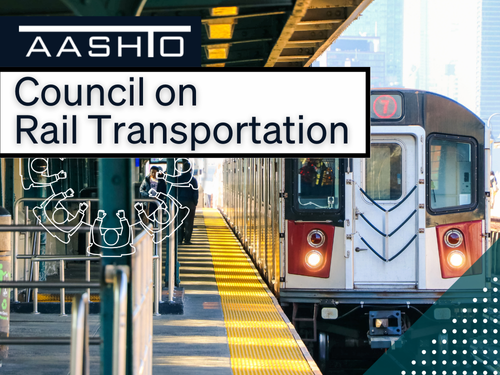 Nation
Nation
Registration Open for AASHTO’s Winter Rail Meeting
December 19, 2025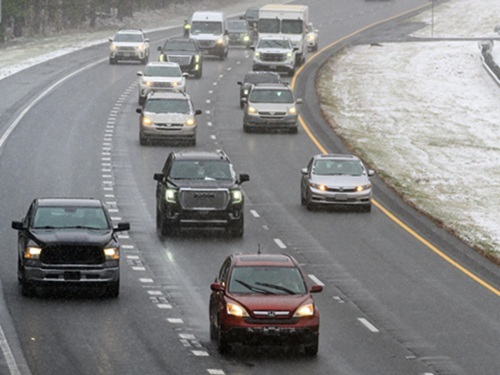 Nation
Nation
